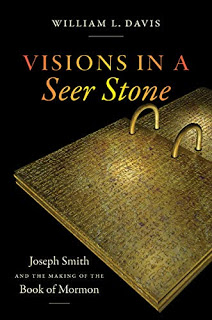This probably isn’t a book for everyone, but it is unusually insightful. I recommend it to those who want to understand the context of the Book of Mormon in terms of Joseph Smith’s environment.
The book happens to fit in with a project I’m working on that I’ll discuss more in a few weeks.
Essentially, Davis focuses on the implications of the Book of Mormon as a dictated text. The book doesn’t take a position on the origins of the Book of Mormon, in terms of revelation, inspiration, translation, or composition.
I’ll discuss another aspect of this book it tomorrow.
_____
The publisher’s page lets you read some of the book.
https://uncpress.org/book/9781469655666/visions-in-a-seer-stone/
A panel of reviewers have posted comments here.
Rather than write my own review, I’ll post part of the review by Michael Austin, from the above citation.
Source: About Central America

